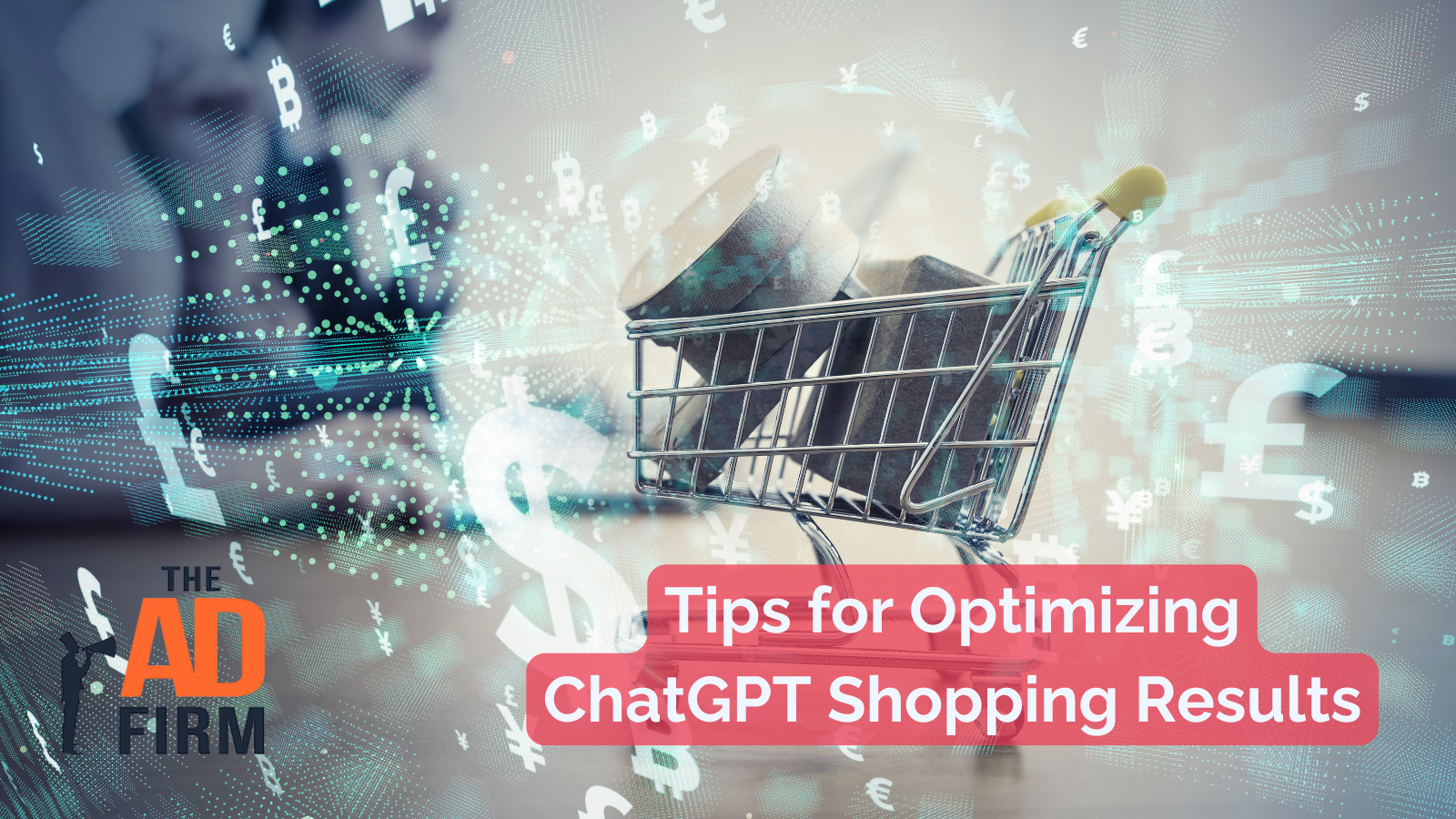Getting your products seen is tougher than ever. Many e-commerce brands invest heavily in SEO, yet still find their listings buried, especially on AI-powered platforms like ChatGPT and other conversational tools.
As more consumers rely on AI assistants for shopping recommendations, visibility rules are shifting. Traditional SEO alone won’t cut it. Even well-designed product pages can get passed over if the structure, metadata, or clarity don’t align with how these systems interpret content.
Today, we’ll walk you through what today’s AI-driven search means for online stores and how to fine-tune your product listings to surface more effectively. You’ll learn how to build a comprehensive e-commerce SEO strategy that serves real users and the AI systems guiding their decisions.
Let’s get down to it!
The Growing Connection Between E-commerce SEO and AI Shopping Recommendations
AI now actively plays a role in how users discover products. As more people ask ChatGPT for shopping advice, recommendations, or product comparisons, the model pulls structured data, analyzes user intent, and looks for signals of relevance and quality.
The result of this change? The line between e-commerce SEO and AI visibility has started to blur. Traditional SEO practices like optimizing product titles, meta descriptions, and schema markup now serve a dual purpose.
They help your products rank in search engines and feed AI systems the data they need to match your products with user queries. If you don’t tailor your content and metadata for machine readability, you’re missing out on a growing slice of traffic.
This connection is still evolving, but one thing is clear: AI shopping tools like ChatGPT prioritize clarity, structure, and contextual relevance.
Businesses that adapt their SEO to align with these expectations position themselves to appear more often in AI-generated product carousels and recommendation responses.
How ChatGPT Sources Product Information for Shopping Recommendations
ChatGPT gathers product information through a structured system to match user intent with relevant data. When someone types a shopping-related query, the model pulls from third-party providers and filters through various data points.
This process ensures the recommendations are helpful, accurate, and contextually aligned with the user’s wants.
Boost Your Business Growth with The Ad Firm
- PPC: Optimize your ad spends with our tailored PPC campaigns that promise higher conversions.
- Web Development: Develop a robust, scalable website optimized for user experience and conversions.
- Email Marketing: Engage your audience with personalized email marketing strategies designed for maximum impact.
ChatGPT prioritizes key elements when curating product results:
- Structured metadata like product name, price, availability, and description
- Customer reviews and summarized user feedback
- Ratings from third-party platforms
- Visual content, such as images with captions or feature labels
- Real-time or recently updated product feeds from data partners
This system helps ChatGPT offer personalized and useful shopping suggestions. It relies on what it can read and interpret, not just what looks good. Structured and relevant product data plays a critical role.
When that data aligns with user queries, it boosts visibility and conversion rate optimization.
Tips for Optimizing ChatGPT Shopping Results to Get Your Products Seen
Being seen in ChatGPT’s shopping results means aligning your data with how the model interprets and ranks product listings. It’s not just about SEO anymore. It’s about preparing your product information to be AI-ready. Here’s what you should focus on next:
Tip #1 Optimize Structured Metadata for Third-Party Data Providers
Structured metadata is the language ChatGPT reads first. This includes schema.org markup and product feeds in formats like JSON-LD or XML. These fields inform the model about the product, how much it costs, where it’s available, and what makes it unique.
You should fill out every available metadata field completely and accurately. This means including product dimensions, variants, pricing, availability, and relevant identifiers like SKUs. Avoid using vague descriptions or outdated information in structured data. It can lead to your listings being skipped or misrepresented.
Always validate your structured data using testing tools before going live. This ensures compatibility with platforms that source data for ChatGPT. Clean, accurate metadata is the foundation for visibility in AI-driven shopping results.
H3: Tip #2 Focus on Customer Reviews and Ratings Quality to Influence ChatGPT Selection
ChatGPT looks closely at customer sentiment. When the model generates summaries, it often pulls from product reviews. These influence both what gets shown and how the product is described. Poor or generic feedback can lower your listing’s visibility and credibility.
You should encourage detailed reviews that mention specific features or experiences. This helps the model generate more informative summaries. Responding to reviews also signals ongoing engagement, which improves trust and authority.
Advance Your Digital Reach with The Ad Firm
- Local SEO: Dominate your local market and attract more customers with targeted local SEO strategies.
- PPC: Use precise PPC management to draw high-quality traffic and boost your leads effectively.
- Content Marketing: Create and distribute valuable, relevant content that captivates your audience and builds authority.
Keep your review volume high and recent. Products with consistent positive feedback get more attention. Over time, a strong reputation built through reviews can improve product visibility and buyer confidence.
H3: Tip #3 Create Clear Product Descriptions That ChatGPT Can Simplify and Understand
AI tools don’t guess. They interpret what they’re given. If your product descriptions are cluttered with jargon or marketing fluff, ChatGPT will have a harder time summarizing them accurately. This can reduce how often your product appears in results.
Write descriptions that focus on clarity. Break down the product’s purpose, who it’s for, and how it solves a problem. Use consistent formatting and structure to make your listings easier for AI to process.
Avoid vague phrases and highlight key features early in the description. Simplicity and structure make it easier for ChatGPT to turn your content into clear, digestible recommendations.
H3: Tip #4 Optimize Pricing Strategy and Product Value Positioning
ChatGPT factors in pricing when presenting products, especially if the user includes a budget or value preference in their query. If your pricing looks inflated or inconsistent with similar listings, your product may not appear.
Positioning your product around both price and perceived value matters.
You should conduct pricing research to align your products with their competitive market. Whether you’re aiming to be the most affordable or the best value at a higher price point, be clear about why. Use product metadata and content to communicate benefits that support the price.
Transparent pricing also helps with e-commerce PPC management. The clearer your value proposition, the more aligned your listings across channels. Smart pricing drives visibility and conversion through AI-driven search.
H3: Tip #5 Build Product Authority Through User Intent Matching and Context Relevance
Relevance drives ranking in ChatGPT. Your product won’t be recommended if it doesn’t match the user’s search intent. You need to think beyond keywords and focus on matching your listings with how people search.
Use long-tail keywords and contextual language that reflects use cases and buyer priorities. Update your titles and metadata to include these naturally. Think like your customer and describe products the way they would.
Enhance Your Brand Visibility with The Ad Firm
- SEO: Enhance your online presence with our advanced SEO tactics designed for long-term success.
- Content Marketing: Tell your brand’s story through compelling content that engages and retains customers.
- Web Design: Design visually appealing and user-friendly websites that stand out in your industry.
Also, connect your product pages with relevant content, like FAQs or blog posts, to build context. This gives ChatGPT more signals about your product’s purpose, improving authority and visibility.
H3: Tip #6 Prepare Product Feeds for Direct Merchant Integration with OpenAI
OpenAI plans to support direct merchant product feeds. When that becomes available, your products should be ready. Structured, up-to-date feeds will make your listings easier to access and display accurately in ChatGPT.
Start by auditing your current product feed setup. Use standardized formats like XML and ensure your inventory is synced and accurate. This includes correct pricing, shipping times, and product variations.
Clean data leads to better integration. If you’re already submitting feeds to Google or other platforms, you’re in a good position. Just be ready to adapt your feeds for OpenAI when the opportunity opens. Being early can offer a real competitive edge.
Step-by-Step Process to Improve E-commerce SEO for ChatGPT
Improving your visibility in ChatGPT’s shopping results requires more than basic SEO updates. It demands a structured approach built around how AI processes content and connects data to user intent.
Below is a step-by-step process to align your strategy with AI-specific shopping behavior:
H3: Step 1: Conduct AI-Focused Keyword Research and Content Audit
Start by researching queries users might enter into ChatGPT when looking for your product. These queries often mirror natural language, not just search engine syntax. Use tools that identify conversational and intent-driven keywords, and prioritize terms that describe use cases or customer needs.
Next, audit your existing product pages and supporting content. Remove fluff and ensure each page has a clear purpose tied to those AI-friendly keywords. Refine your copy for clarity and value. Ensure the content answers questions, explains benefits, and stays relevant to product use.
H3: Step 2: Optimize Technical SEO Elements for AI Crawlers
AI tools rely on clean technical foundations to access and interpret your content. Slow page speeds, missing structured data, or broken links make extracting relevant product information harder for models like ChatGPT. Fix these issues to improve accessibility and data accuracy.
Transform Your Online Strategy with The Ad Firm
- SEO: Achieve top search rankings and outpace your competitors with our expert SEO techniques.
- Paid Ads: Leverage cutting-edge ad strategies to maximize return on investment and increase conversions.
- Digital PR: Manage your brand’s reputation and enhance public perception with our tailored digital PR services.
Add or enhance schema markup on every product page. Use structured formats like JSON-LD to label each element clearly. Make sure mobile responsiveness, crawlability, and URL structure are in place. These adjustments help ChatGPT and other AI platforms interpret and prioritize your listings.
H3: Step 3: Create Content Clusters Around Product Categories and Use Cases
Grouping content into clusters helps build authority and relevance. Each product category should have supporting content that addresses related questions, comparisons, and buying guides. This context gives AI more signals to understand the full scope of your offerings.
Write content that naturally connects to your products, like blog posts, FAQs, or instructional pages. Link them internally to the right product pages. This structure improves user navigation and clarity for AI, increasing the likelihood of being featured in shopping recommendations.
H3: Step 4: Monitor and Measure AI-Generated Traffic and Performance
Tracking how AI-driven platforms influence your site performance takes more than checking general analytics. You need to measure patterns in long-tail traffic, engagement metrics, and specific queries that match AI-style phrasing. Use this insight to refine your strategy.
Set up custom UTM tags or monitor referral sources closely. If you use web hosting services that support analytics integration, ensure everything is configured to capture detailed user behavior. Look for signs of growth tied to AI-related search trends and adapt accordingly.
When to Consider Hiring Professional SEO Services
If your internal team is stretched or lacks the technical knowledge to manage AI-optimized SEO, consider hiring experts. Maintaining structured data, content optimization, and platform-specific updates is a full-time task.
A professional team can handle that complexity and free you to focus on running your business.
Working with a team providing seamless and professional SEO services ensures your e-commerce platform is aligned with traditional and AI-driven search trends. You get better visibility, stronger rankings, and a clear strategy built to evolve with your customers’ tools.
If you’re ready to scale your online store and tap into AI-powered shopping platforms like ChatGPT, The Ad Firm offers the expertise, tools, and comprehensive approach to help your products get discovered and drive results.
Maximize Your Online Impact with The Ad Firm
- Local SEO: Capture the local market with strategic SEO techniques that drive foot traffic and online sales.
- Digital PR: Boost your brand’s image with strategic digital PR that connects and resonates with your audience.
- PPC: Implement targeted PPC campaigns that effectively convert interest into action.






